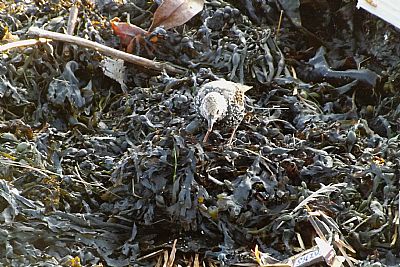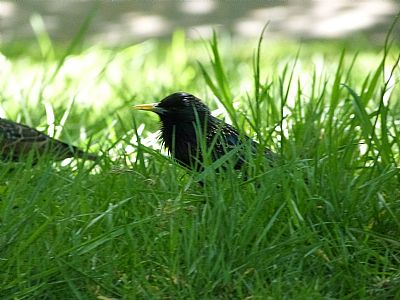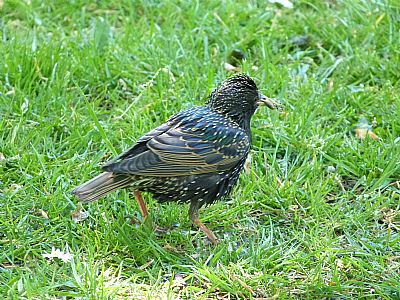STARLING : Sturnus vulgaris
The starling is familiar in many West Dunbartonshire gardens where it looks for mainly for insects. It should not be confused with the blackbird. The starling generally keeps to the exposed areas, while the blackbird tends to scuttle around the undergrowth (as does the thrush). For blackbird see index.asp?pageid=731629
The adults are almost black, but this is made up from a beautiful purple-and-green sheen with small beige spots. The immature birds are comparatively plain being dark gey-brown. While we do get large flocks in winter these are not in the amazing numbers found to the south which do impressive aerial displays. But they may once have been in these numbers. There is concern about falling numbers.
They spend much of their time in sizeable flocks and can be quite impressive when on farmland, but sometimes smaller groups or even individuals may go off to alternative environments - even the shore at low tide - where they poke around in the debris and seaweed for morsels.
While there have always been flocks in the area, it has been noted in past years that these have not been as large as in the past. Their numbers seem to fluctuate and in the autumn of 2023 seemed to be on the rise again in nearby Cardross and Helensburgh.

One of a small group of starlings down on the Clyde shore at low tide. It almost merges into the kelp. Well camouflouged.

Hunting as a group in a park lawn.

A beak crammed with tasty grubs.juicy grubs.
WIKIPEDIA : http://www.example.comhttps://en.wikipedia.org/wiki/Common_starling
WILDLIFE TRUSTS : https://www.wildlifetrusts.org/wildlife-explorer/birds/thrushes-chats-flycatchers-starling-dipper-and-wren/starling

